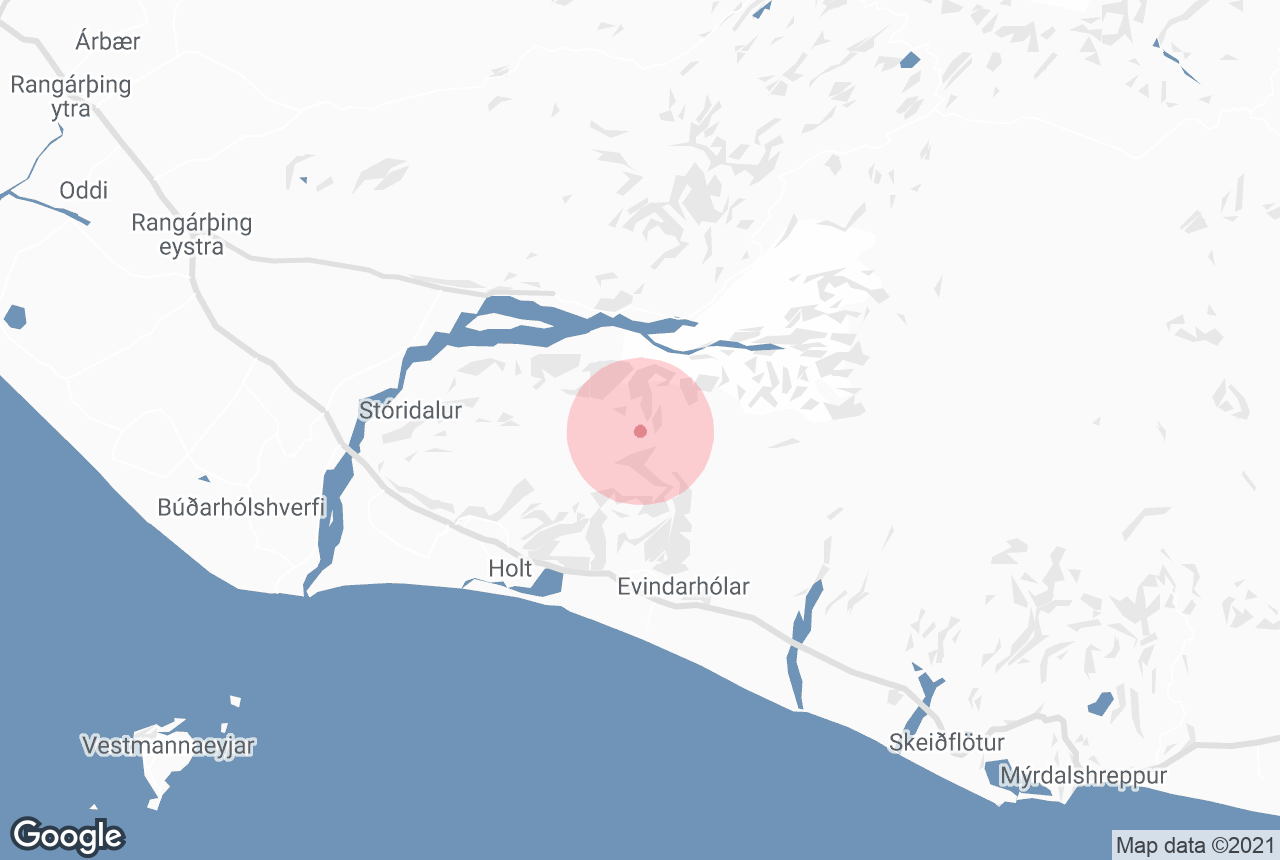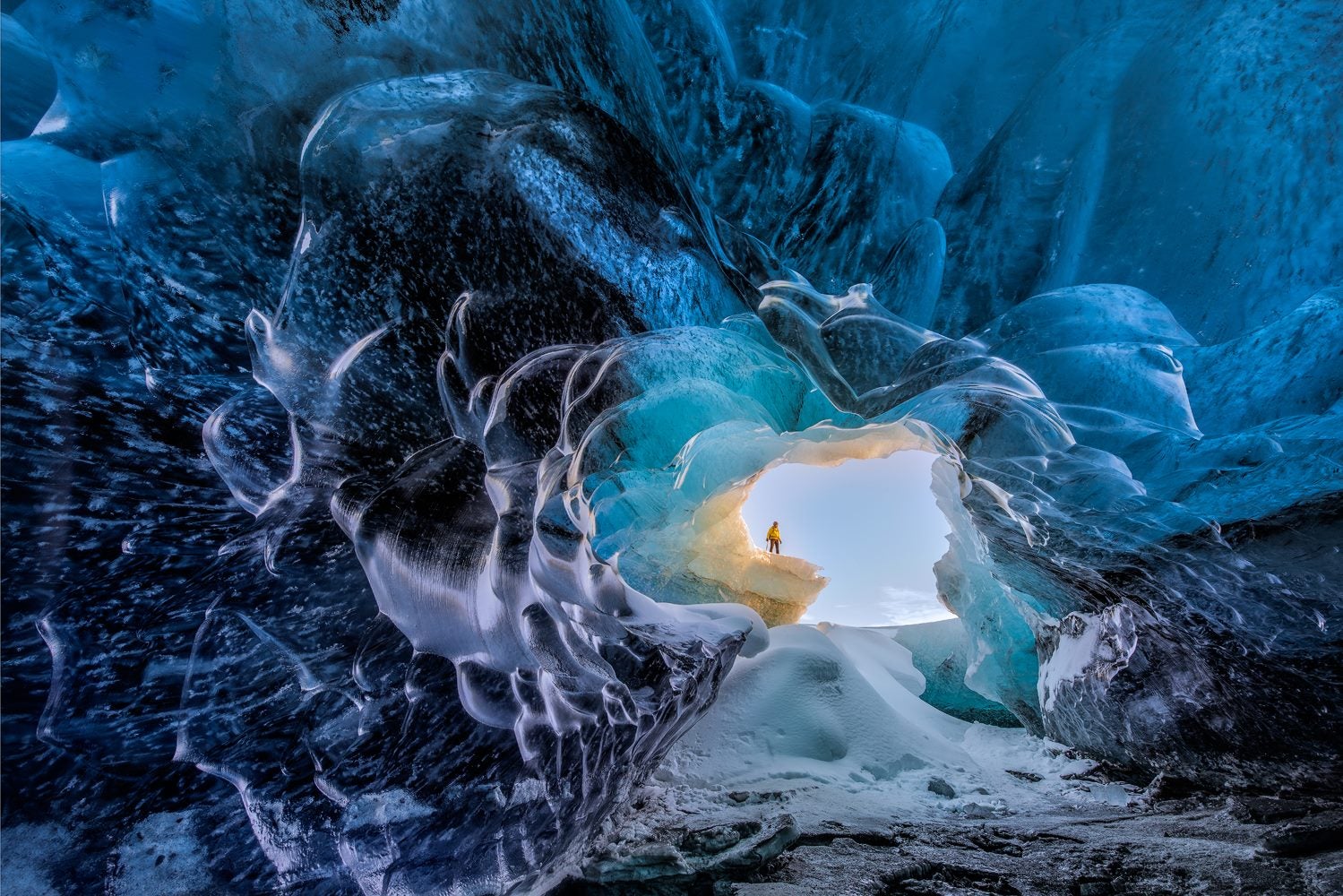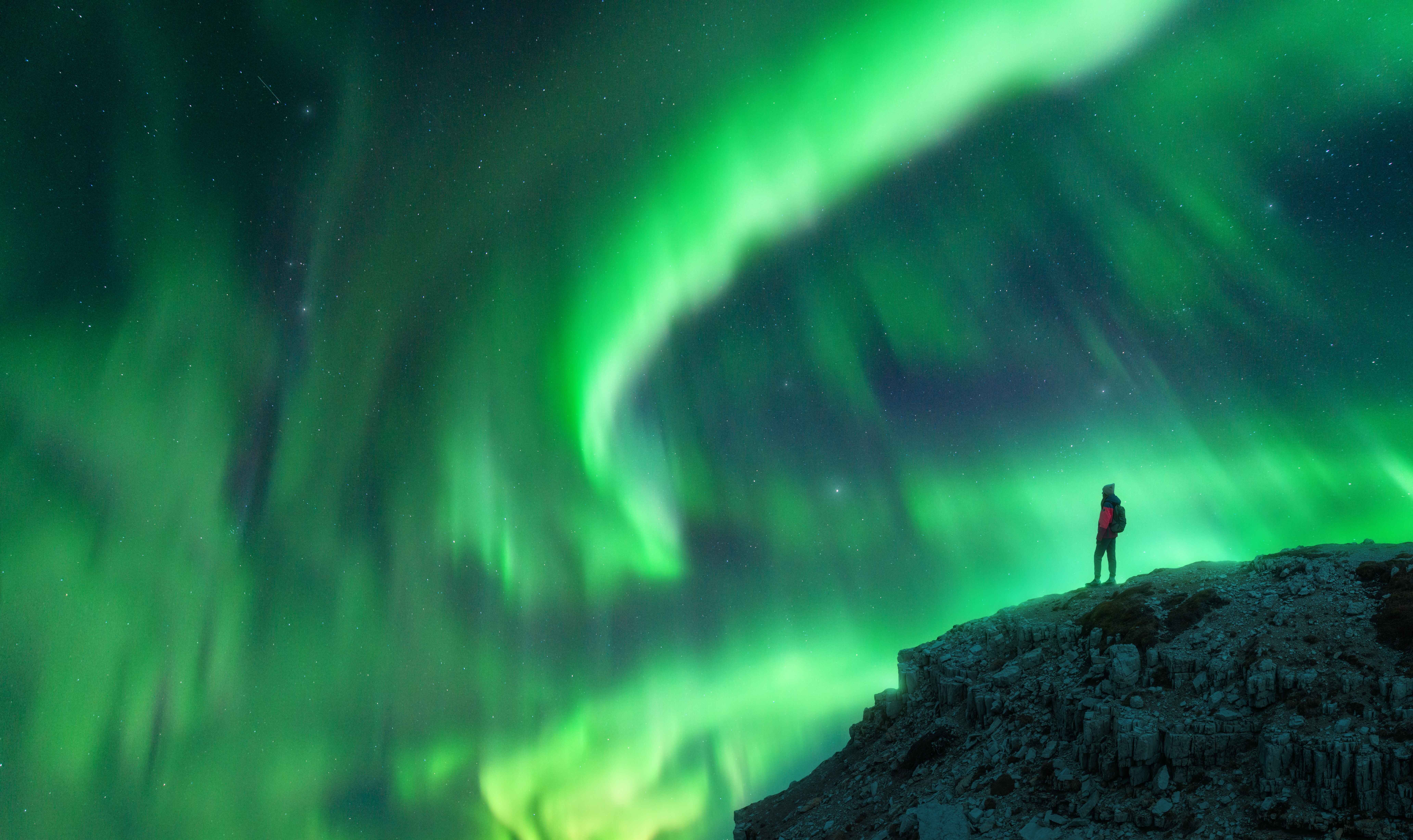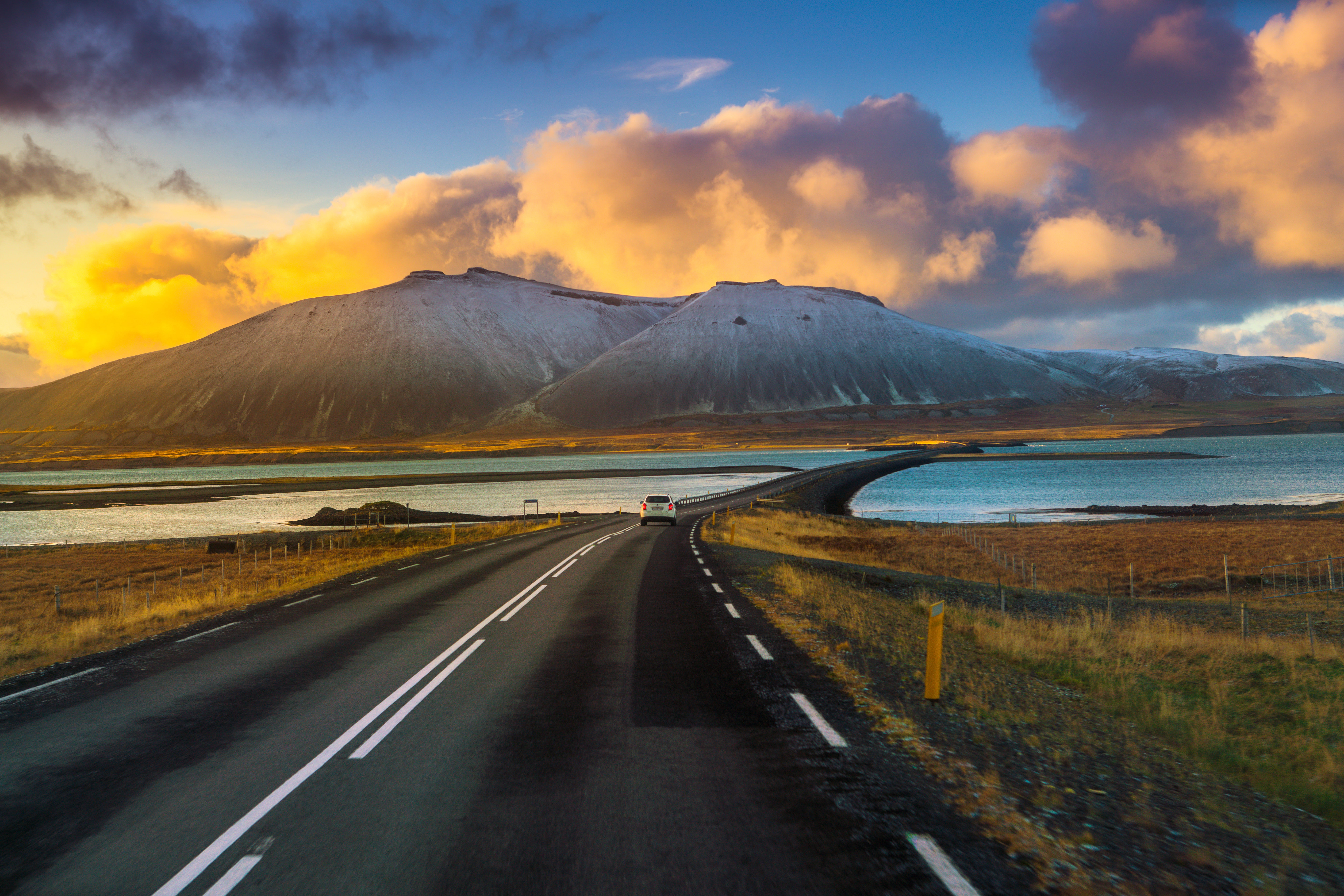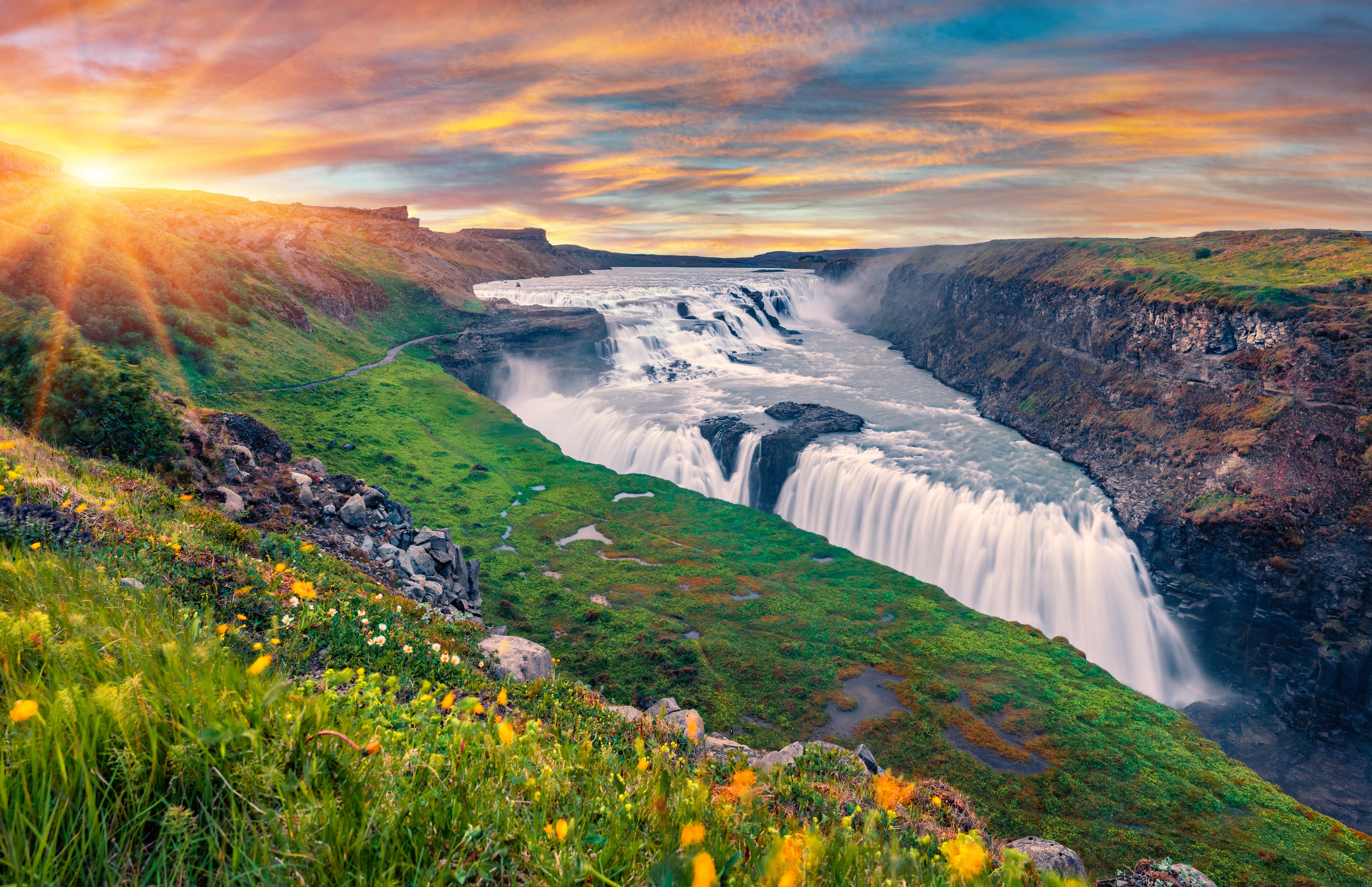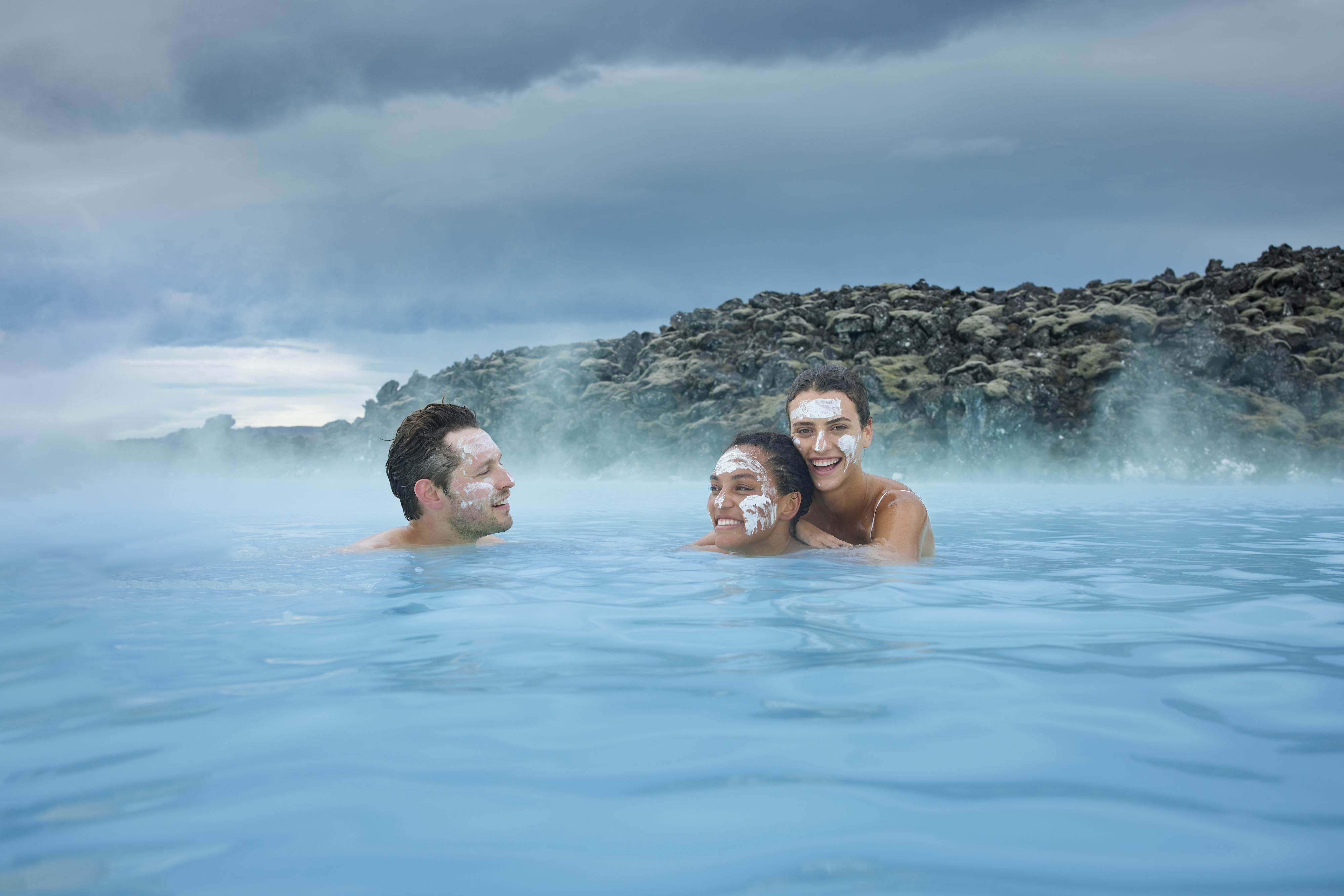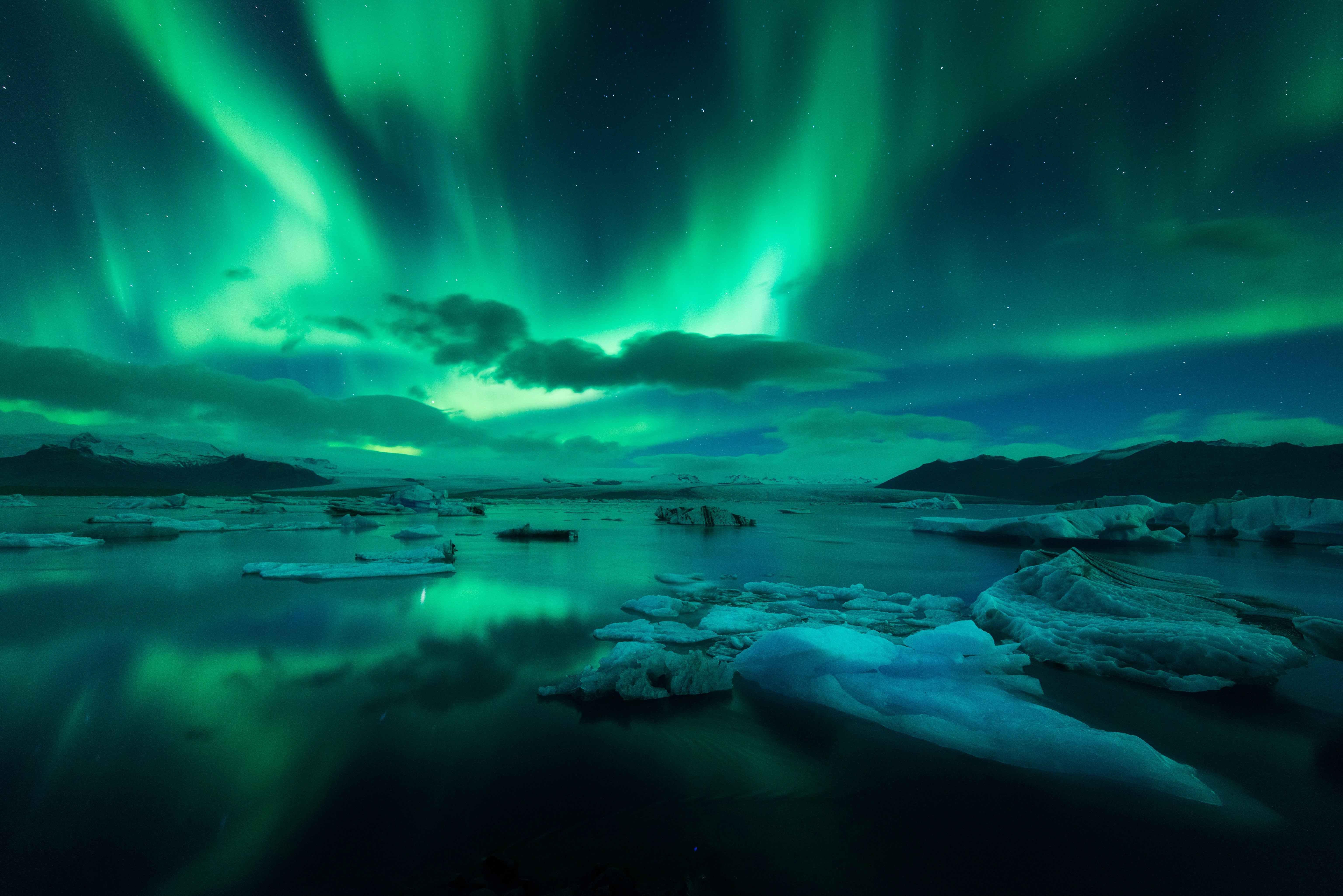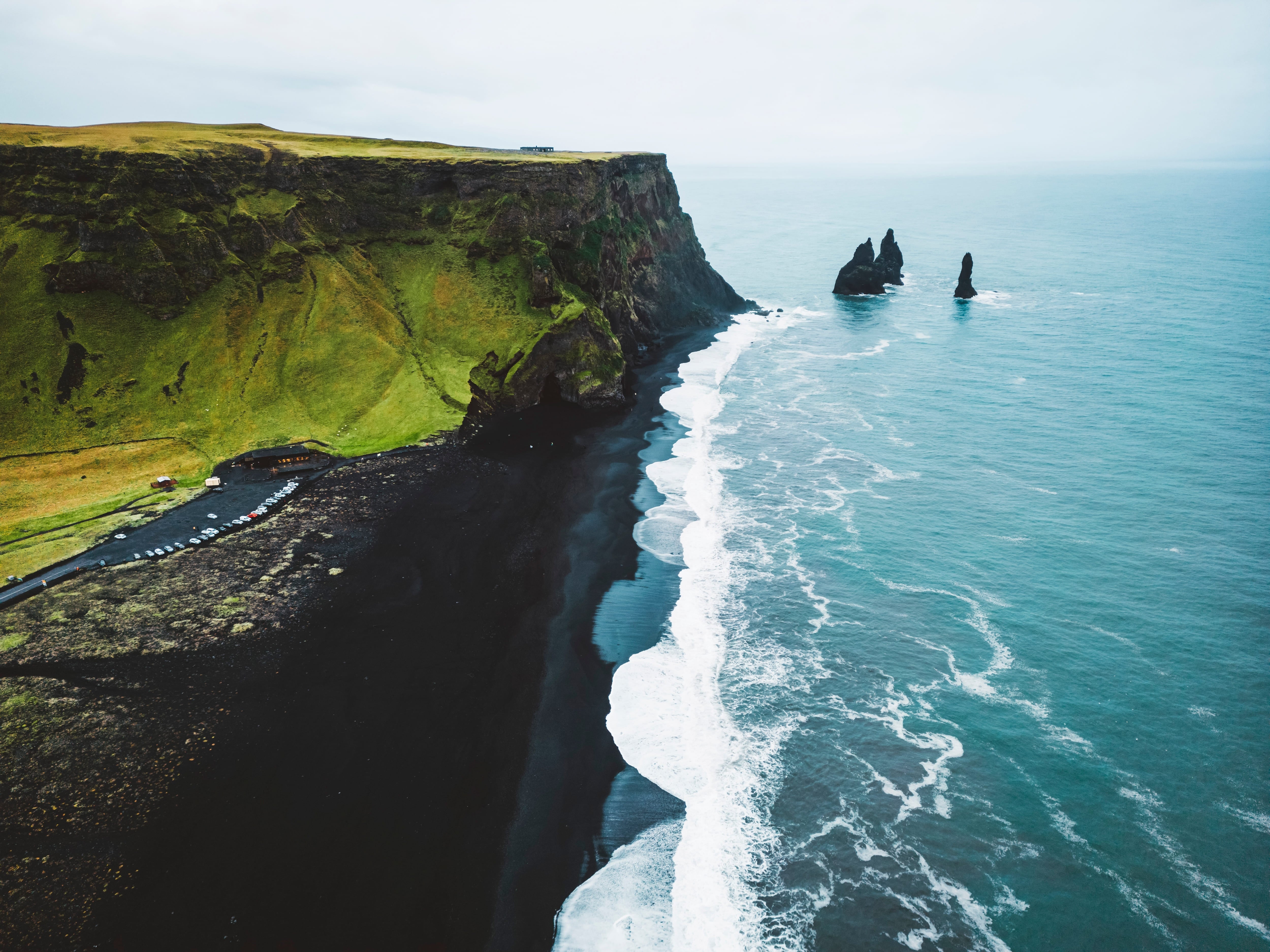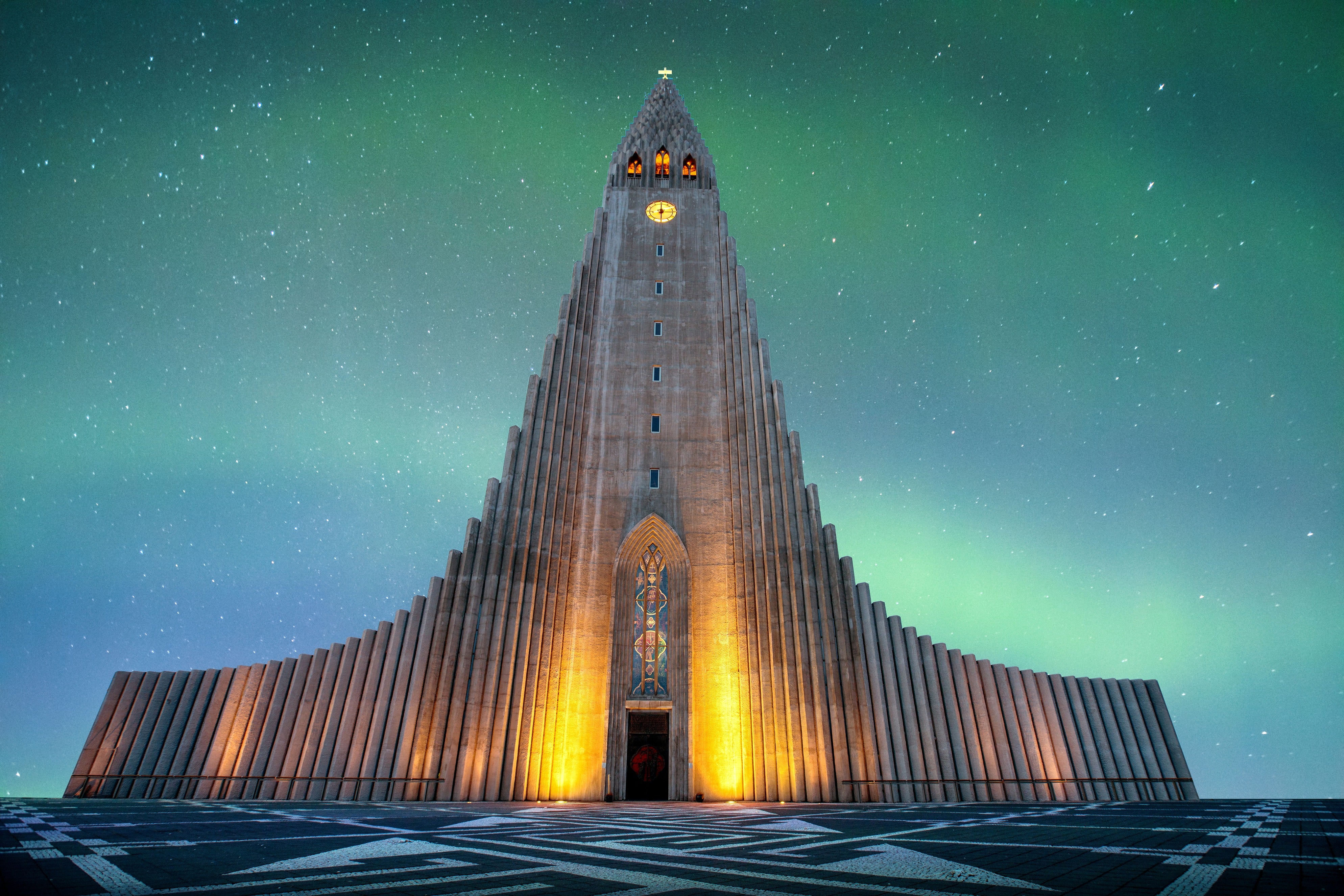Eyjafjallajokull Volcano made international headlines in 2010 with a series of dramatic eruptions. Now dormant and safe to visit, it's one of Iceland’s top destinations for hiking, snowmobiling, and capturing sweeping glacial views. Use this Eyjafjallajokull Volcano travel guide to plan your visit to this iconic South Coast volcano.
On the South Coast of Iceland looms a glacier volcano 5,466 feet (1,666 meters) high at its peak. It’s called Eyjafjallajokull, a stunning spot for glacier hiking in Iceland and other adventures.
Why You Can Trust Our Content
Guide to Iceland is the most trusted travel platform in Iceland, helping millions of visitors each year. All our content is written and reviewed by local experts who are deeply familiar with Iceland. You can count on us for accurate, up-to-date, and trustworthy travel advice.
The name translates to "glacier of the mountains of the islands," referring to the nearby Vestmannaeyjar Archipelago (Westman Islands), a group of islands formed by volcanic activity.
Today, Eyjafjallajokull is not only a striking landmark but also a base for exciting activities like snowmobiling tours. Many travelers also choose to rent a car in Iceland to explore the South Coast at their own pace and reach this iconic site with ease.
Don’t worry, officials monitor the volcano closely for seismic activity and close it to visitors if they deem it unsafe. Read on to learn more about Eyjafjallajokull’s history and the tourist landmark it is today.
What To Know About Eyjafjallajokull Volcano
-
Famous Face: Eyjafjallajokull was featured in the 2013 Ben Stiller movie The Secret Life of Walter Mitty and referenced in TV shows including Madam Secretary and Sense8. It’s also been the subject of several songs.
-
Best Time To Visit: The summer months are the best for visiting Eyjafjallajokull, as the weather is milder and hiking conditions are safer. However, the colder months are great if you’re interested in a snowmobile tour or seeing the glacier in optimal winter wonderland conditions.
-
Have No Fear: Eyjafjallajokull has been dormant since August 2010 and is heavily monitored by a number of geological institutions monitoring for signs of activity.
-
How To Get There: Eyjafjallajokull is just off the Ring Road on Iceland’s South Coast, around a 2-hour drive from Reykjavik. It’s accessible by car, and many guided South Coast tours include stops near the glacier or its visitor centers.
-
Things To Do: Visitors can explore the Eyjafjallajokull Visitor Center, enjoy scenic hikes around the surrounding area, take a glacier snowmobile tour, or visit the nearby Seljalandsfoss and Skogafoss waterfalls, both of which were impacted by the 2010 eruption.
How Fire and Ice Shaped Eyjafjallajokull
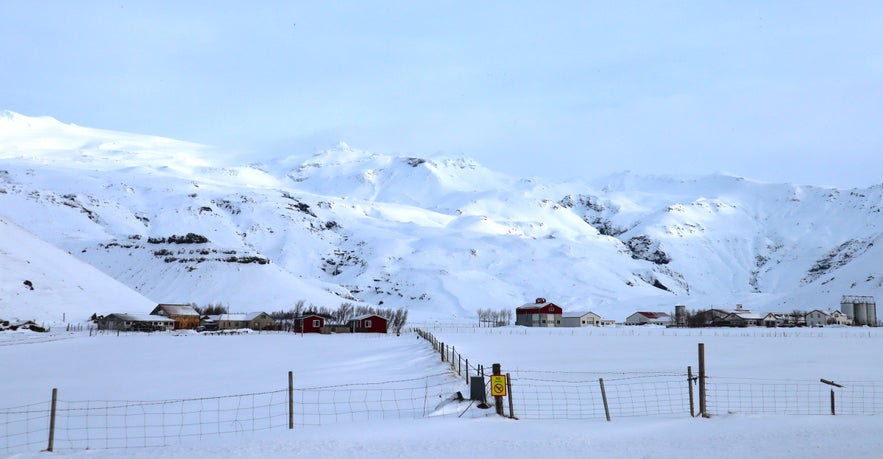
Eyjafjallajokull is classified as a stratovolcano, or a composite volcano, because it’s made up of uneven strata created by many eruptions over time.
The ice cap atop Eyjafjallajokull is approximately 25 square miles (66 square kilometers), making it one of Iceland’s smaller glaciers. The glacier covers the summit of the volcano and feeds several outlet glaciers that descend its slopes.
The two main outlet glaciers of Eyjafjallajokull are Gigjokull, which is the largest, and Steinholtsjokull. The runoff of Gigjokull flows into the Markarfljot River. Steinholtsjokull feeds into Steinholtslon Lake.
This ice cap played a big role in the 2010 eruption, as the interaction between the erupting lava and the overlying glacier intensified the explosive activity and ash production.
Eyjafjallajokull’s Eruption History
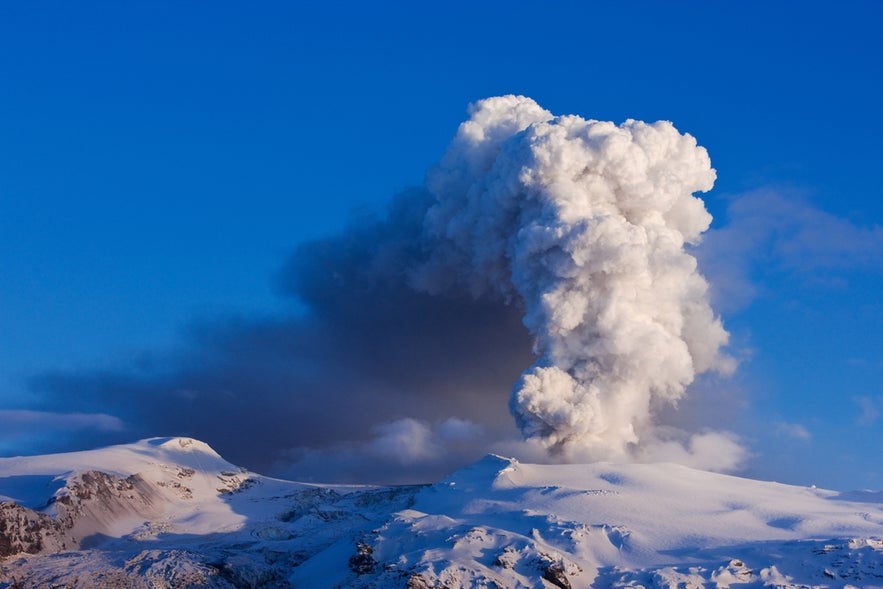 A period of volcanic activity over 200 years ago impacted the areas around the glacier and reportedly led to the deaths of cattle and sheep in the area. Since Iceland’s settlement in 874, Eyjafjallajokull erupted in 900, 1612, and from 1821 to 1823.
A period of volcanic activity over 200 years ago impacted the areas around the glacier and reportedly led to the deaths of cattle and sheep in the area. Since Iceland’s settlement in 874, Eyjafjallajokull erupted in 900, 1612, and from 1821 to 1823.
The eruptions of 1821 to 1823 led to the release of a great amount of ash. It is believed to have had an unusually high fluoride content, which many believe resulted in farm animals dying of fluoride poisoning. Eyjafjallajokull is safe for now, but you can still find the dark gray volcanic ash from its 19th-century eruptions all over the South of Iceland.
Eyjafjallajokull 2010 Eruptions
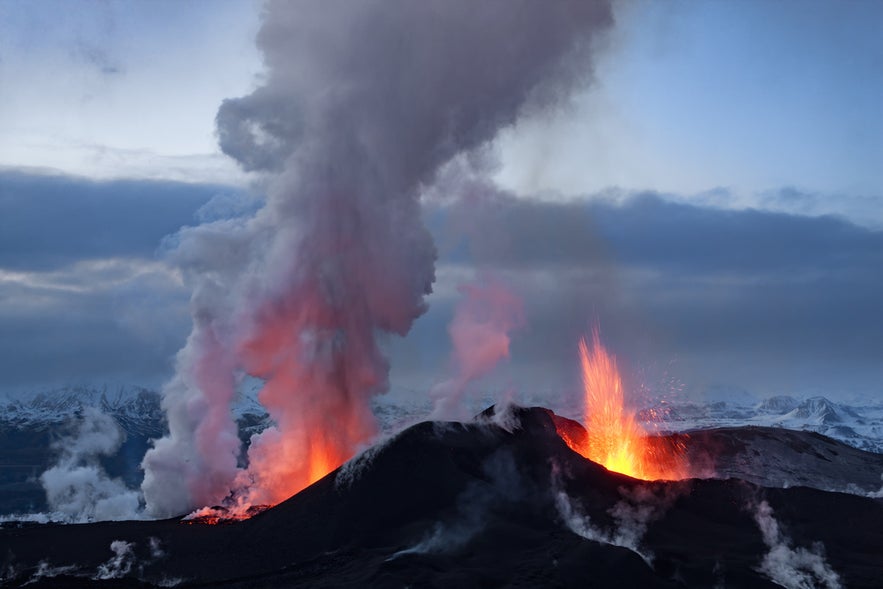 Scientists began to note increased seismic activity in late February of 2010, suggesting that magma from beneath the Earth’s surface was building up in Eyjafjallajokull. This activity caused several thousand small earthquakes in the area over the next few weeks.
Scientists began to note increased seismic activity in late February of 2010, suggesting that magma from beneath the Earth’s surface was building up in Eyjafjallajokull. This activity caused several thousand small earthquakes in the area over the next few weeks.
March 2010
On March 20, 2010, the eruption began on Fimmvorduhals, a mountain pass between Eyjafjallajokull and the Myrdalsjokull Glacier. Myrdalsjokull is 15 miles (24 kilometers) from Eyjafjallajokull and sits atop Katla, one of Iceland’s most active volcanoes. This eruption caused a fissure near the popular hiking trails in the area.
Scientists have linked past eruptions of Eyjafjallajokull and subsequent activity at Katla, implying a geological connection between their magma chambers.
April 2010
On April 14, 2010, another eruption occurred. As magma poured from the central crater of Eyjafjallajokull, glacial meltwaters surged into bodies of water nearby. As a result, 800 people were evacuated, not in fear of magma, but of equally dangerous glacial floods, which have decimated Icelandic villages in the past.
Effects from the April eruption were felt not just below the glacier, but also above. Airlines stopped air travel over parts of Northwest Europe for several days because ash released by Eyjafjallajokull was thrown high enough into the sky to make flying unsafe.
May 2010
In May 2010, another eruption affected air travel by causing electrical storms. This period of volcanic activity ended by May 23, 2010, but its impact lasted long afterwards.
The ash that fell across large areas of Iceland altered soil composition and required changes in some farming practices. Research into the composition and distribution patterns of this ash led to new environmental insights.
Satellite images of the eruption captured by NASA's Earth Observatory continue to provide valuable data for atmospheric studies to help predict future volcanic activity.
Thankfully, there were no human casualties from the 2010 eruptions, and some even considered the airspace closures an overreaction.
Later that same year, the country commemorated the geological event with a special edition of collectible postage stamps containing volcanic ash.
Can You Visit Eyjafjallajokull Now?
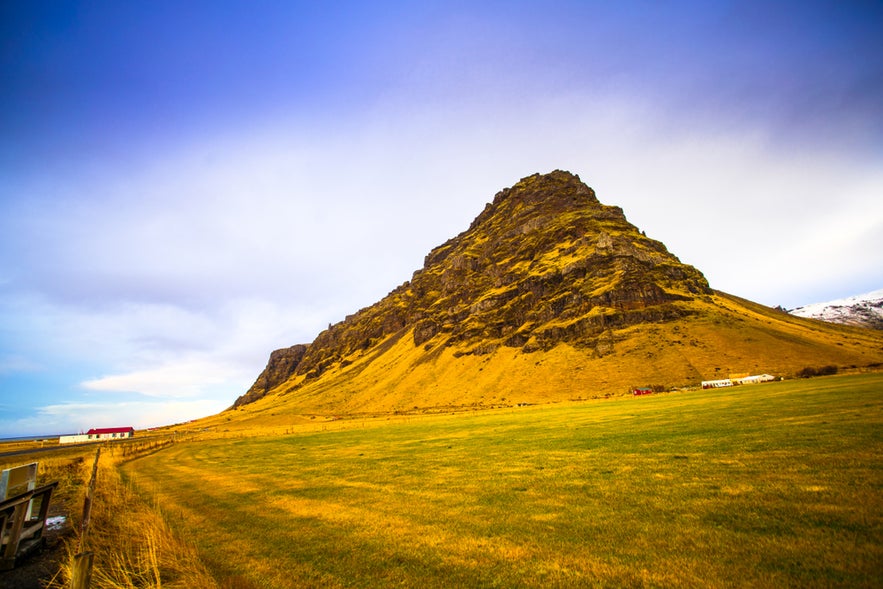 Though its activity in 2010 made headlines globally, Eyjafjallajokull has since been quiet, and there’s little danger of anything similar occurring in the area anytime soon. Experts have considered Eyjafjallajokull dormant since August 2010.
Though its activity in 2010 made headlines globally, Eyjafjallajokull has since been quiet, and there’s little danger of anything similar occurring in the area anytime soon. Experts have considered Eyjafjallajokull dormant since August 2010.
Institutions, including the Icelandic Meteorological Office, monitor seismic activity throughout the country and issue timely warnings in the event of potentially dangerous conditions. Additionally, infrared sensors installed around the Eyjafjallajokull Glacier closely monitor its volatility.
How To Get to Eyjafjallajokull
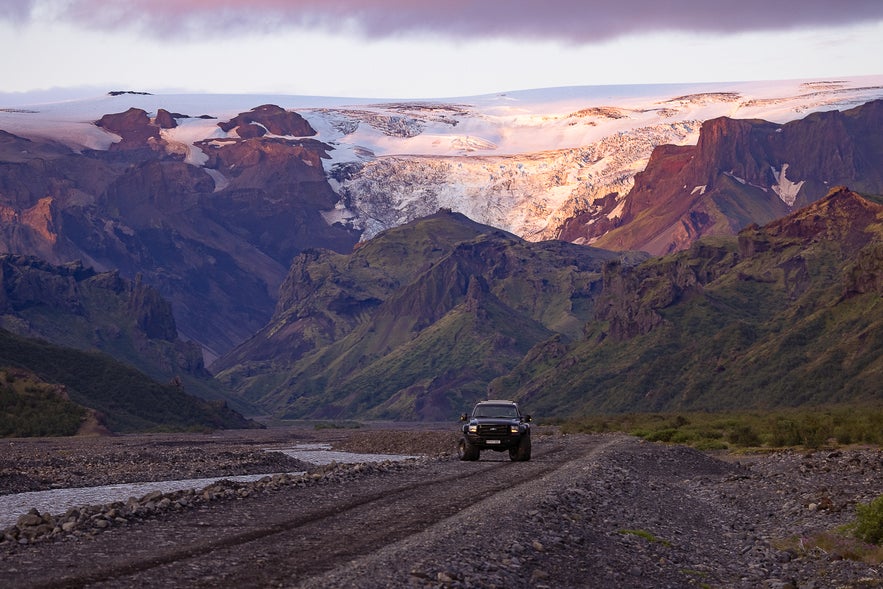 The easiest way to reach Eyjafjallajokull is by driving the Ring Road (Route 1) on Iceland’s South Coast. The glacier volcano lies about 78 miles (125 kilometers) from Reykjavik, and you can reach the area in under two hours by car. Turn onto Route 249 near Hvolsvollur for closer views, or continue to the Eyjafjallajokull Visitor Center for insights into the 2010 eruption.
The easiest way to reach Eyjafjallajokull is by driving the Ring Road (Route 1) on Iceland’s South Coast. The glacier volcano lies about 78 miles (125 kilometers) from Reykjavik, and you can reach the area in under two hours by car. Turn onto Route 249 near Hvolsvollur for closer views, or continue to the Eyjafjallajokull Visitor Center for insights into the 2010 eruption.
While you can’t drive onto the glacier itself, guided super jeep tours and glacier hikes are available from nearby towns like Hvolsvollur and Skogar.
Best Self-Drive Tours With Eyjafjallajokull Access
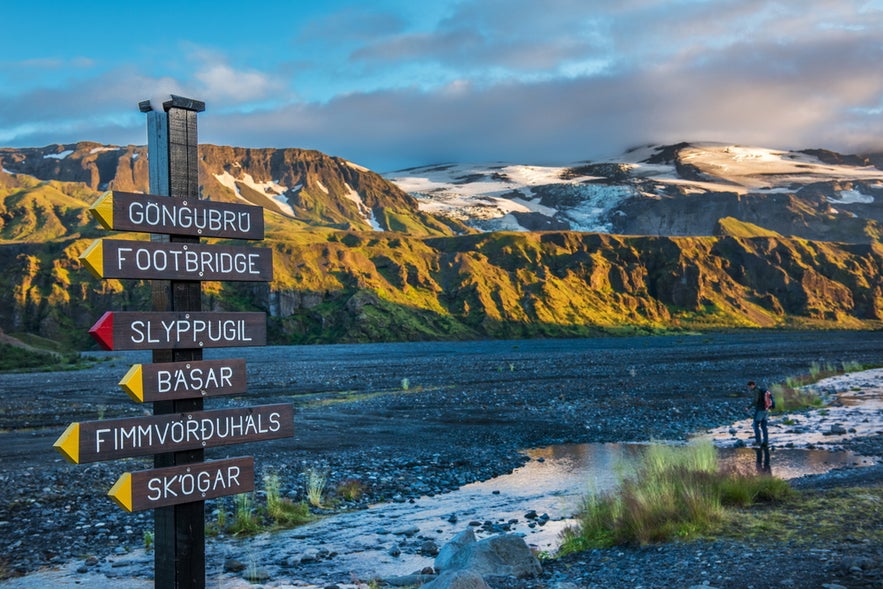 If you’re renting a car, these self-drive tours make it easy to include Eyjafjallajokull in your itinerary. You’ll also visit waterfalls, black sand beaches, and other South Coast highlights.
If you’re renting a car, these self-drive tours make it easy to include Eyjafjallajokull in your itinerary. You’ll also visit waterfalls, black sand beaches, and other South Coast highlights.
-
7-Day Northern Lights Self-Drive Tour: Embark on a tour of Iceland’s South Coast, Golden Circle, and Snaefellsnes Peninsula, with a detailed itinerary guiding you to ice caves, glaciers, black sand beaches, and the northern lights.
-
One-Week Northern Lights Self-Drive Tour: Experience the Golden Circle, South Coast, Snaefellsnes Peninsula, Reykjavik, and more—with highlights like the Jokulsarlon Glacier Lagoon and Vatnajokull Ice Caves.
-
6-Day Self-Drive Holiday in Iceland: Discover Iceland’s top natural wonders like the Blue Lagoon, Reykjavik, the Golden Circle, the South Coast, and the Jokulsarlon Glacier Lagoon.
-
6-Day South Coast Self-Drive Tour: Explore the Blue Lagoon, Reykjavik, the Golden Circle, the South Coast, and the Jokulsarlon Glacier Lagoon, with flexible routes, curated accommodations, and endless daylight under the midnight sun.
Multi-Day Tours Featuring Eyjafjallajokull
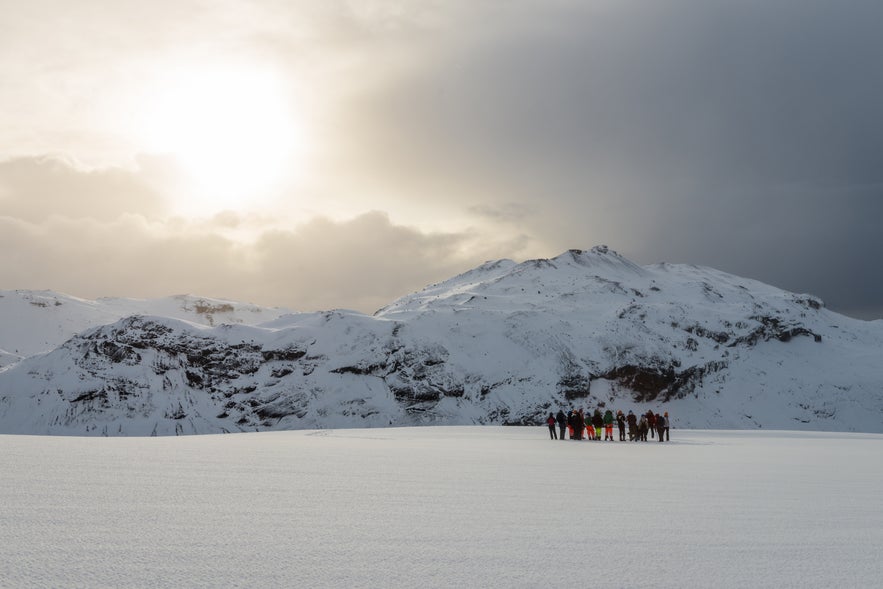 If you want to explore the South Coast without driving, these guided multi-day tours include time near Eyjafjallajokull and other key sights along Iceland’s scenic Ring Road.
If you want to explore the South Coast without driving, these guided multi-day tours include time near Eyjafjallajokull and other key sights along Iceland’s scenic Ring Road.
-
3-Day Northern Lights & Ice Cave Tour: Experience Iceland’s top winter wonders along the Golden Circle and South Coast, featuring waterfalls, glaciers, black sand beaches, and a magical ice cave in Vatnajokull.
-
2-Day Guided Summer Tour: Discover Iceland’s summer magic, featuring waterfalls, glaciers, black sand beaches, and the Jokulsarlon Glacier Lagoon, with comfortable minibus travel, a knowledgeable guide, and the option to add a scenic boat ride among the icebergs.
-
3-Day Golden Circle and South Coast Tour: Visit an ice cave, hike a glacier, and explore Iceland’s most iconic natural wonders for an unforgettable adventure at unbeatable value.
Top Things To Do Near Eyjafjallajokull
The area surrounding Eyjafjallajokull is one of the most scenic and adventure-packed regions in Iceland. Whether you're drawn to outdoor thrills or natural beauty, there are plenty of unforgettable activities and attractions to explore nearby.
Visit Skogafoss Waterfall
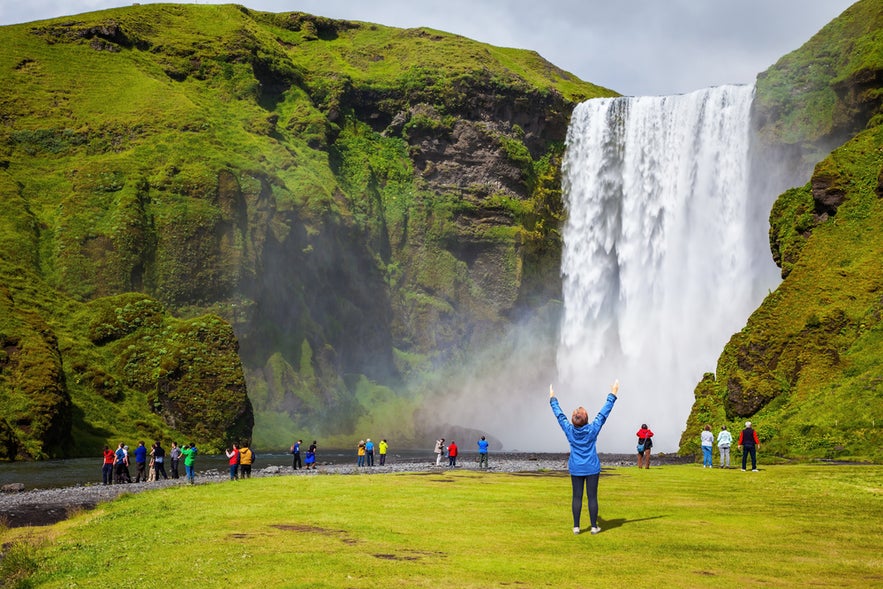 Just a short drive from the volcano, Skogafoss Waterfall is one of Iceland’s most iconic waterfalls. Plunging 197 feet (60 meters) over a sheer cliff, it's known for the rainbows that often appear in its mist.
Just a short drive from the volcano, Skogafoss Waterfall is one of Iceland’s most iconic waterfalls. Plunging 197 feet (60 meters) over a sheer cliff, it's known for the rainbows that often appear in its mist.
A staircase to the top offers panoramic views of the coast and highlands. It’s also the starting point of the Fimmvorduhals hiking trail, which leads between Eyjafjallajokull and Myrdalsjokull glaciers.
See Seljalandsfoss Waterfall
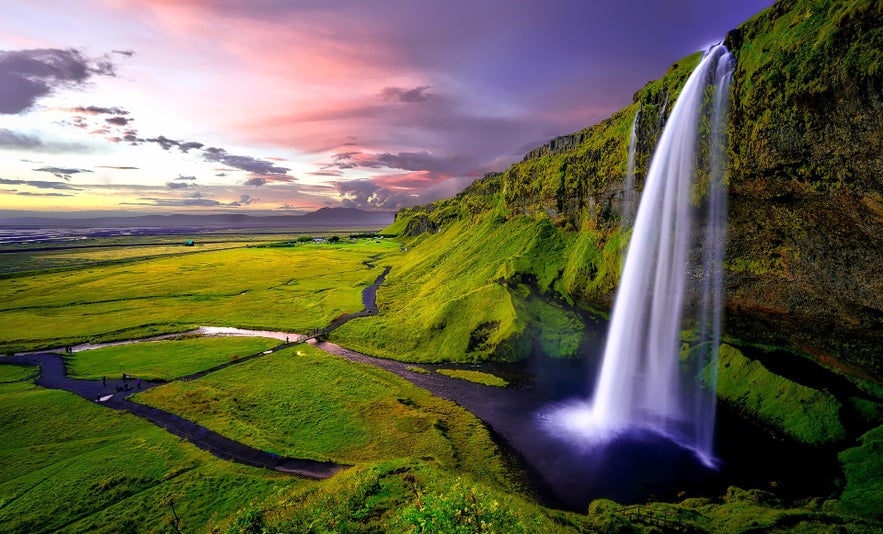 Another nearby gem, Seljalandsfoss Waterfall is famous for the path that allows visitors to walk behind the waterfall for a unique perspective. It’s particularly beautiful in the late afternoon light and a must-visit photo stop along the Ring Road.
Another nearby gem, Seljalandsfoss Waterfall is famous for the path that allows visitors to walk behind the waterfall for a unique perspective. It’s particularly beautiful in the late afternoon light and a must-visit photo stop along the Ring Road.
Go Glacier Hiking
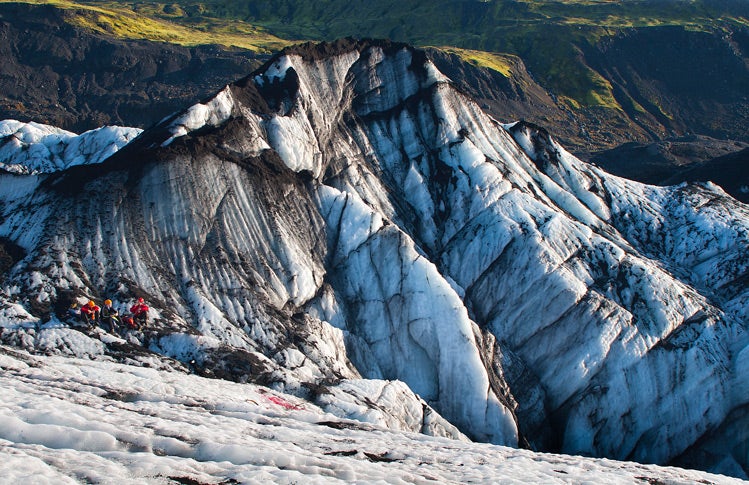
Try Snowmobiling Adventures
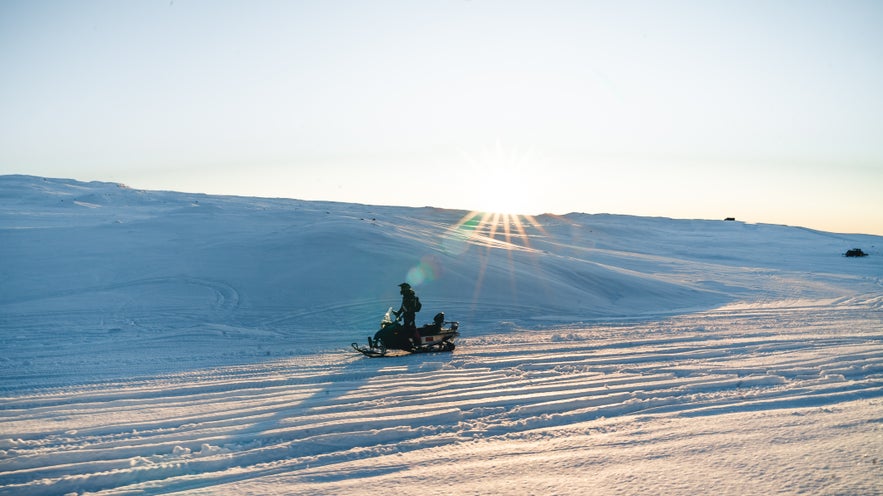 For adrenaline seekers, snowmobiling tours on Eyjafjallajokull or Myrdalsjokull offer an unforgettable way to experience the Icelandic wilderness. Zoom across open snowfields while taking in sweeping views of the mountains and volcanoes.
For adrenaline seekers, snowmobiling tours on Eyjafjallajokull or Myrdalsjokull offer an unforgettable way to experience the Icelandic wilderness. Zoom across open snowfields while taking in sweeping views of the mountains and volcanoes.
Go Horseback Riding
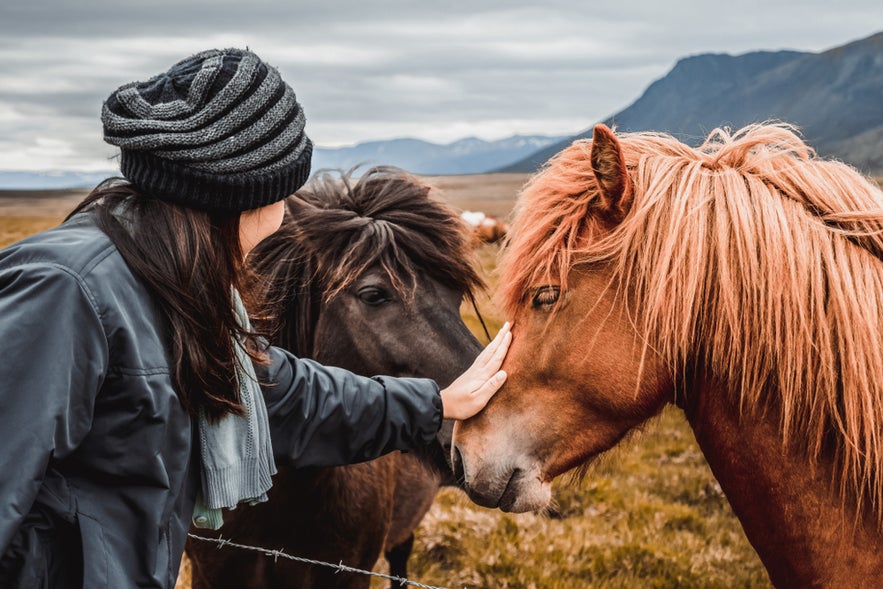 Explore the countryside on the back of an Icelandic horse—a unique and gentle breed with a smooth gait known as the tolt. Local stables near Eyjafjallajokull offer horseback riding tours across black sand plains, lava fields, and lush farmland, giving you a peaceful way to connect with the landscape.
Explore the countryside on the back of an Icelandic horse—a unique and gentle breed with a smooth gait known as the tolt. Local stables near Eyjafjallajokull offer horseback riding tours across black sand plains, lava fields, and lush farmland, giving you a peaceful way to connect with the landscape.
Day Tours to Eyjafjallajokull Glacier
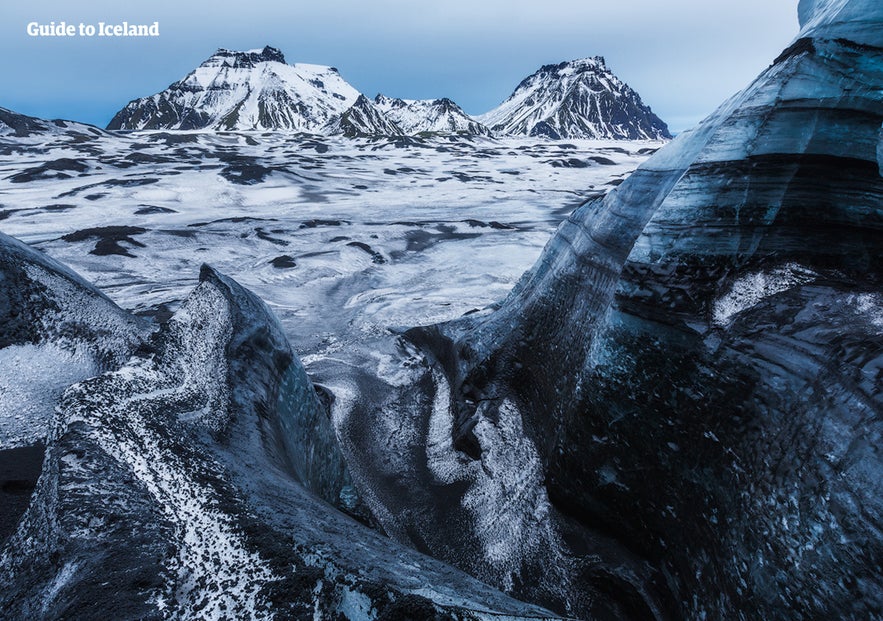
-
Eyjafjallajokull Snowmobiling Tour: Speed across the ice cap in a snowmobile with an expert guide by your side.
-
Skeidvellir Horseback Riding Tour: Take in breathtaking views of Eyjafjallajokull as you ride an Icelandic horse through the meadows of South Iceland.
-
Eyjafjallajokull Glacier Hiking Tour: Experienced hikers looking for a challenge should book this 8-hour hike of Eyjafjallajokull, which includes glacier hiking gear and a post-hike dip in a pool.
FAQs About Eyjafjallajokull Glacier
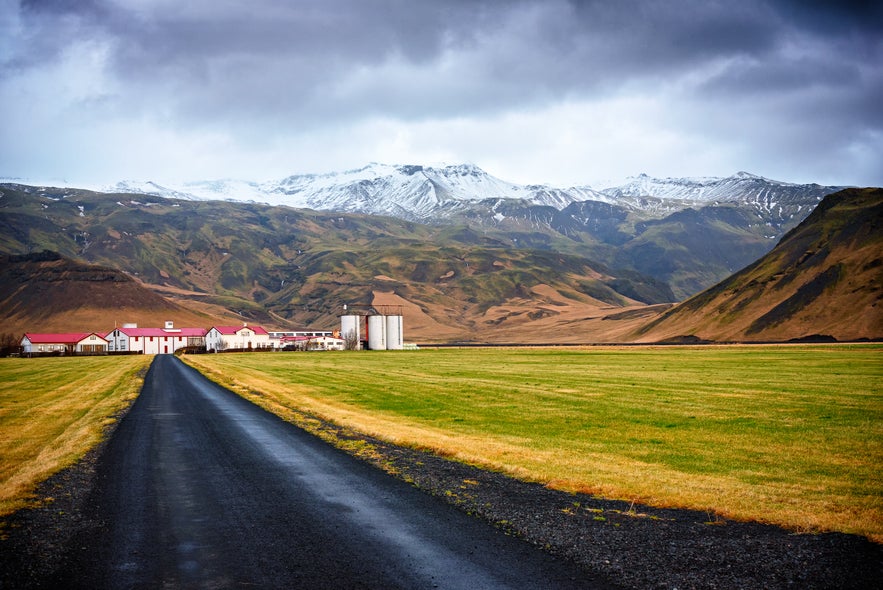 Learn more about this famous ice cap with frequently asked questions about Eyjafjallajokull.
Learn more about this famous ice cap with frequently asked questions about Eyjafjallajokull.
Is there a way to hike to the summit of Eyjafjallajokull?
Hiking to the summit is possible, but it is a challenging and demanding trek, requiring good physical fitness and preparation. We recommend booking a guided tour for safety reasons.
How far is Eyjafjallajokull from Reykjavik?
Eyjafjallajokull is approximately 75 miles (120 kilometers) from Reykjavik.
Can you visit the Eyjafjallajokull Visitor Center?
Yes, the Eyjafjallajokull Visitor Center is open to the public and welcomes visitors interested in learning more about the 2010 eruption. Located near Hvolsvollur, the center features exhibits on volcanic science, firsthand accounts from local residents, and the eruption’s environmental impact.
Is it safe to travel around the Eyjafjallajokull region in a rental car?
Yes, it's generally safe to travel around the Eyjafjallajokull region by car, though visitors should be cautious of weather conditions, particularly in winter. Roads can sometimes be icy or muddy, so a 4x4 vehicle is recommended for some routes.
Explore Eyjafjallajokull's Fiery Legacy
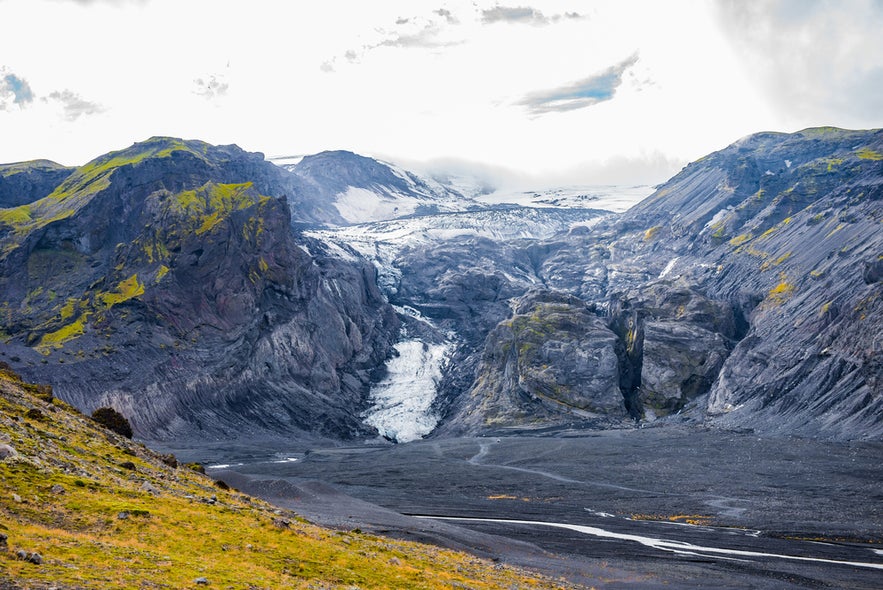 Past eruptions of Eyjafjallajokull changed the face and composition of Iceland and affected how volcanoes are studied and monitored. Take in the majestic scenery when you visit, but also learn about a piece of Icelandic history. A great spot for adventurous and athletic travelers, the ice cap accommodates hiking, snowmobiling, and other activities.
Past eruptions of Eyjafjallajokull changed the face and composition of Iceland and affected how volcanoes are studied and monitored. Take in the majestic scenery when you visit, but also learn about a piece of Icelandic history. A great spot for adventurous and athletic travelers, the ice cap accommodates hiking, snowmobiling, and other activities.
Book a tour today to experience the world-changing wonder of Eyjafjallajokull, or explore more highlights of the South Coast of Iceland.
